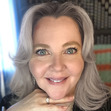C.J. Ives Lopez's Blog, page 4
August 16, 2023
How’s Your Pitch
How’s Your Pitch? I wanna know! I’m Fresh off of BookMARCon, the largest virtual marketing conference powered by BookBrush, and I had the fantastic opportunity to pitch to agents during the conference. Today, I want to share the invaluable insights I gained from this experience.
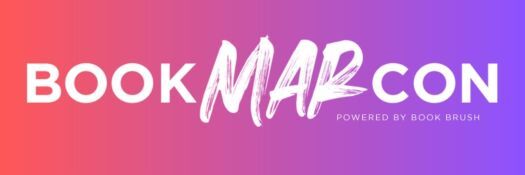 https://bookbrush.com/bookmarcon/
https://bookbrush.com/bookmarcon/Before I had the chance to pitch my work, we were treated to two separate and insightful sessions with experienced literary agents. Mark Gottlieb, of Trident Media Group, and Bethany Jett, of the Cyle Young Literary Agency, graciously shared their expertise. They offered invaluable guidance not just to me, but to the entire conference on the art of pitching.
Each agent had their own individual segment during which they covered different aspects of the process. Mark’s approach differed from Bethany’s, yet both were profoundly insightful. Their advice was timely, as my pitch sessions were scheduled after these seminars.
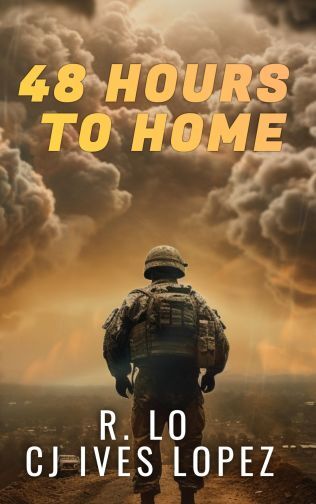
This setup proved to be serendipitous. I absorbed so much from both agents that I found myself reevaluating my own pitch. In a surprising turn, I decided to change the book I was initially planning to pitch entirely.
This wasn’t a decision I took lightly, but after listening intently to Mark and Bethany’s insights, I felt compelled to pitch a completely different book. And, as fate would have it, this proved to be the right call. An agent expressed interest and requested to see the first ten pages of this new book—an opportunity that may not have materialized had I not attended Mark and Bethany’s sessions first. I am immensely grateful for the knowledge imparted by these two remarkable agents and for the opportunity that followed my pitch. Let me know if this is in line with what you were envisioning or if you need further revisions!
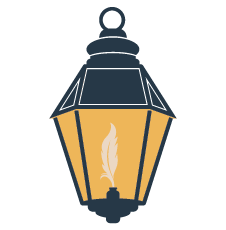
Lucky for me, I had a stack of manuscripts and a whirlwind of different ideas ready to roll. Here’s a golden nugget for my fellow writers: always pack more than one project in your pocket. You just never know when an agent might perk up and ask, “What else ya got?”
As a multi-genre author with ADD, I’m pretty much a creative tornado—I’m here, there, and zooming everywhere, which anyone who knows me will cheerfully confirm. Far from being a hindrance, this constant buzz of energy was my secret weapon during these pitch sessions. It gave me the flexibility to switch lanes on a dime and dazzle potential agents with a vibrant array of stories. If you’re like me, hone it in so you don’t zap the life out of them by talking too much.
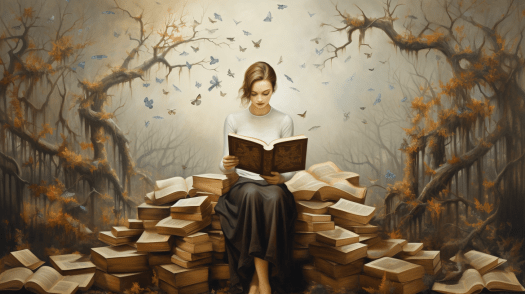
But here are. The things that I learned while pitching
FirstNail that word count. If you’re in the dark about the word count expectations within traditional publishing, hit up Google and enlighten yourself. I won’t dish out the details here—I’m not claiming to be the expert. But here’s a real-life nugget from my experience: while pitching a military drama to an agent, he flagged the sweet spot as 80,000 to 100,000 words. When he caught wind of my word count, my chances took a hit on site. My tally? A 39,000 and change. (P.S.—I served him the exact number, so be sure you do the same.)

Switching gears, when I was pitching a romance to another agent, my manuscript clocked in at around 20,000, give or take a few hundred words. Now, anyone who knows CJ (that’s me!) knows I’m a bonafide short story enthusiast. I always have been. I don’t dish up heaping helpings of narrative; I’m more of a straight-to-the-heart-of-the-matter writer. Blame it on my ADD if you like, but I operate by a no-frills, get-to-the-point style. It’s a quirky saying, but it’s a mantra that fits me to a tee: “Straight in, no kissing.” It’s unconventional, but hey, it’s me, and I embrace it wholeheartedly.
It’s all about hitting that bottom line in the traditional publishing world. And let’s be honest, a bundle of short stories isn’t typically the golden ticket to meeting those financial goals. So, 99.9% of the time, you’ve got to hit those word counts—like, really nail them—to match up with traditional publishing standards. It’s almost as essential as your morning coffee!

But hey, if you’re venturing into the self-publishing scene, the playground is a whole lot wider. You’ve got room to experiment, stretch out or condense down, and find the word count that feels just right for your story. But before you waltz into a pitch with a traditional publisher, give your manuscript a hard look. Is it playing by the big league rules? Because sealing the deal is a lot sweeter when you’re already hitting those magic numbers.
SecondHere’s a golden nugget that almost slipped past me, but luckily, I got the memo just in time for my pitch sessions: if you’re pitching fiction, bring a complete novel to the table. Yup, start to finish, it’s got to be done. But if nonfiction is your jam, you’re in luck; you can pitch a brilliant idea just bursting to be brought to life.
 https://www.amazon.com/Addicts-Journey-Home-Tale-Sisters/dp/B08BRN36PJ
https://www.amazon.com/Addicts-Journey-Home-Tale-Sisters/dp/B08BRN36PJI was revved up about pitching a middle-grade novel—a series, actually—that I’m currently crafting; just four chapters in, but hey, I write fast. In my mind, I was like, “This is no biggie. This novel is golden, and I’m going to pitch it.” Middle grade is my jam, the niche I cherish the most, and there was this one agent at the conference who specializes in it. It felt like fate.
My series? Picture Narnia colliding with Sabrina the Teenage Witch and Charmed—a blend that’s as magical as it sounds. I was buzzing with the thought, “This is the one that will swing doors wide open for me!”

But brace for the plot twist: you don’t pitch incomplete novels in traditional publishing. That’s a rookie mistake I nearly made. They’ll basically say, “That’s not done baking. Got anything else fresh out of the oven?” Oh, the heartbreak that revelation was! I picked that agent specifically to pitch this book, and I had to pivot hard.
So, I switched gears and chatted with him about a romance novel instead. Even though my pitches didn’t quite spark fireworks—whether because I didn’t hit the word count or for some other mystery reason—it was a learning experience for the books.
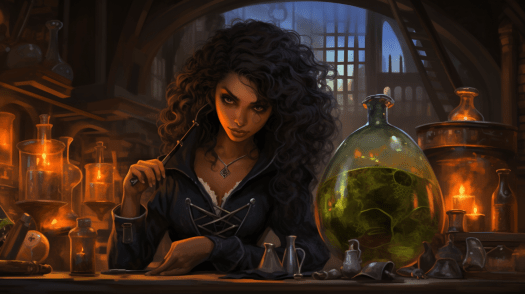 Third
ThirdBe a presence, I mean, be Googleable! Here’s a quick tip: pop open an Incognito browser, type in your pen name—or the name you plan to publish under—and hit the search button. What comes up? Are you visible? Do you have a footprint in the literary world?
I’m not talking about just because you’ve published a book but because you are actively engaging, sharing, and discussing your craft. Shine that spotlight on yourself and craft a platform. Why? Because it sends a clear signal to agents and publishers that you’re not just a writer but a proactive promoter of your work. You’re willing to roll up your sleeves for them, just as they are for you.
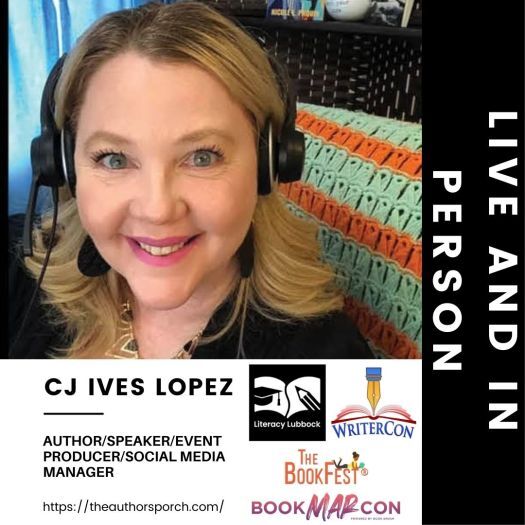 http://www.cjiveslopez.com
http://www.cjiveslopez.comThink of it as a two-way street—a mutually beneficial relationship. It’s a partnership, after all. Does this mean publishers won’t take a chance on someone without a platform? No, that’s not the case. But remember, they’re placing a bet on you. So why not stack the deck in your favor? Give them a compelling reason to take that chance on you.
FourthAlright, here’s an insider tip that struck a chord with me. One agent, just one, explicitly mentioned this, but it resonated deeply—and I suspect other agents might be on the same wavelength, even if they didn’t say it outright. So here it is: if you’re already self-published and haven’t hit a milestone—say, 10,000 book sales (not dollars, we’re talking actual copies sold)—consider pitching under a fresh pen name. Why? Because, in the eyes of traditional publishers, your current name might be sporting a ‘been there, tried that’ vibe.
 http://www.cjiveslopez.com
http://www.cjiveslopez.comNow, let me get personal for a sec. I’ve got a bookshelf’s worth of published work—over 20 books. But here’s the kicker: none of those titles has danced past the 10,000 sales mark. Nope, not one. I haven’t landed in the six-figure author club (yet!).
But hey, Google me—whether as CJ Ives Lopez or The Authors Porch—and you’ll find I’ve got a platform that’s alive and kicking. But in terms of raw sales? My pen name isn’t setting the world on fire. And that’s OK.
FifthStay in the know about the tropes that are sizzling hot in the market—and aim to hit those marks in your work. Make it your mission to become a trope connoisseur within your genre. What’s classic and beloved, what’s gaining traction, and what’s as overplayed as a summer hit on repeat? More importantly, identify the tropes that make your readers cringe—those are the ones to avoid, like a plot hole in a mystery novel. If certain tropes in your genre are reader repellents, steer clear.
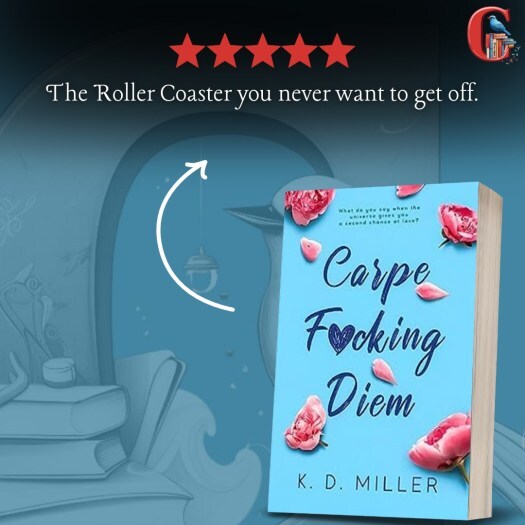 https://kdmillerbooks.com/carpe-fcking-diem/
https://kdmillerbooks.com/carpe-fcking-diem/But here’s a twist: if you’ve got a soft spot for a trope that most readers can’t stand, but a niche absolutely adores, you might just have found your golden ticket. If your heart beats for that trope, write it—passionately and unabashedly. Then, find your tribe of readers who will devour your work, those loyal fans who will return for more, time and time again.
If you’re racking up impressive sales with this approach, you’re crafting a compelling case for an agent. Picture yourself saying, “Just take a look at these numbers.” It could be your key to making an agent sit up, take notice, and decide that you’re a chance worth taking.
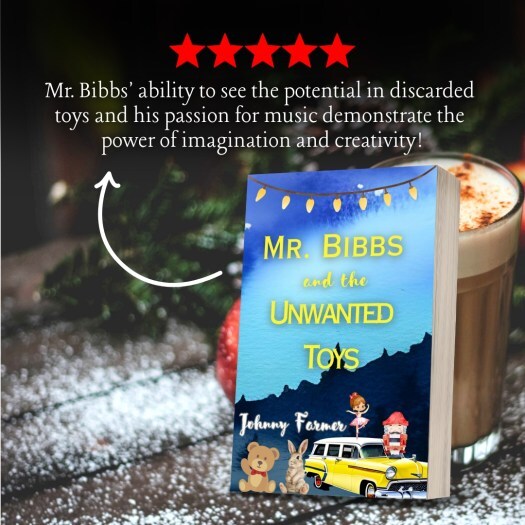 https://theauthorsporch.com/johnny-farmer/Sixth
https://theauthorsporch.com/johnny-farmer/SixthFirst and foremost, have a gripping hook ready for when an agent asks, “What do you have?” In my own experience, I was eager to start with my tagline when pitching my military drama. I found myself diving into Christian’s journey, detailing his struggles in the military. But, crucially, I initially left out a key selling point: my story was a fictionalized blend of two real-life veterans’ experiences—soldiers who faced immense challenges while transitioning from military service and grappling with mental health issues, their stories unfolding over smoky conversations in the Area of Operations.
To my surprise, one insightful agent taught me which line should open my pitch. I was floored—was this seasoned professional really offering me this golden advice? Gratefully armed with this new insight, I adjusted my approach for my next pitch to a different agent. As I spoke, I caught a twinkle of interest in that agent’s eyes. They were nearly sold—until we hit the all-important word count issue. And just like that, the atmosphere shifted.
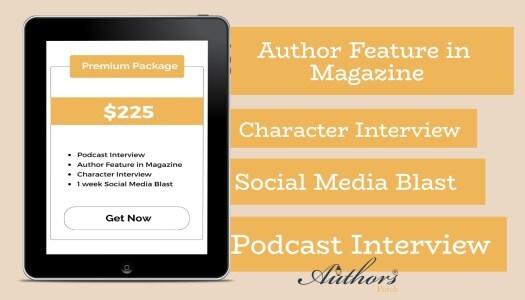 https://theauthorsporch.com/premium-package/
https://theauthorsporch.com/premium-package/This experience was eye-opening.
Agents are more than gatekeepers; they are seasoned industry pros, many of whom are eager to impart their wisdom. If you approach these conversations as a willing student rather than a relentless salesperson, you stand to gain invaluable insights. Otherwise, you risk repeating the same mistakes and missing the chance to refine your pitch for future opportunities.
My strategy was simple yet effective. I greeted each agent warmly: “Hi, nice to meet you.” After exchanging pleasantries, and upon their prompt, I succinctly delivered my prepared pitch in a clean 30 seconds. Then, crucially, I stepped back to let them lead. They taught; I absorbed. When a pause in the conversation naturally arose, I seized the moment to contribute more.
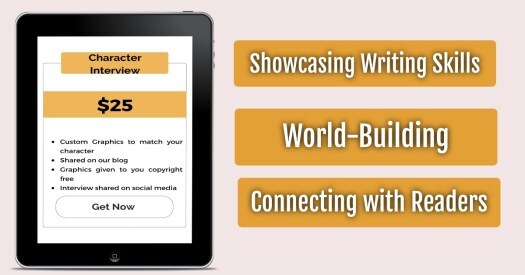 https://theauthorsporch.com/character-interview/
https://theauthorsporch.com/character-interview/The key here is balance. I avoided becoming so engrossed in selling my work that I closed myself off from learning. And, despite failing to meet the word count and initially stumbling in my pitch to the first agent (who graciously taught me a better approach), two out of the four agents requested sections of my manuscripts.
Don’t become so fixated on selling that you forget to listen. Listening, after all, is not just a sign of respect—it’s among the most powerful skills you can hone in writing and life.
It was very interesting.
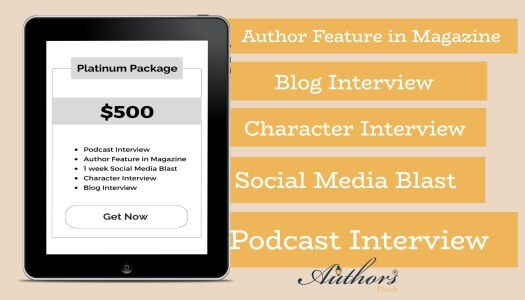 https://theauthorsporch.com/platinum-package/Seventh
https://theauthorsporch.com/platinum-package/SeventhKnow your genre inside and out—it’s non-negotiable. If you’re fuzzy on the specifics of your chosen genre, prepare for a tough road ahead. Agents will quiz you, probing for depth and breadth of knowledge. While they aren’t necessarily averse to multi-genre authors, they tread carefully. Unless you’re a proven bestseller, a diverse writing portfolio can give agents pause. It’s not that they are biased; instead, they’re searching for focus.
When an agent takes a chance on you, they’re staking their reputation—and significant resources—on your potential. Understandably, they want assurance that you’re committed to the genre they’re championing. From their perspective, an author juggling multiple genres might be spreading themselves too thin, risking quality and attention to detail.
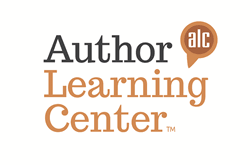 https://www.authorlearningcenter.com/
https://www.authorlearningcenter.com/Think of it as a matter of trust. For example, risk assessment is paramount in my professional life. My team is small—just my husband and me. We’re careful about our ventures because our livelihood is on the line. It’s our entire world at stake.
That’s a sentiment agents share. When they commit to you, they’re not just inking a deal—they’re making a substantial investment, sometimes tens of thousands of dollars. And they need to believe wholeheartedly that you are a sound investment.
So, if you’re a multi-genre author, the bar is high. Excellence isn’t optional; it’s mandatory. You need to show that you’re versatile and possess deep expertise and commitment in each genre you tackle. You must demonstrate that your craft isn’t diluted by your range but rather enriched by it.

To put it plainly: Do the work. Master your genre(s), and show agents that your focus is laser-sharp, regardless of how broad your writing spectrum is.
When you send your manuscript, attention to detail matters. Use New Times Roman, 12-point font, double spacing, and one-inch margins. This industry standard shows you’re a professional who knows the ropes.

Your manuscript’s opening must be catchy—it needs to halt agents in their tracks. Make them catch their breath and compel them to read on. For example, I received feedback about the apparent lack of conflict in my romance novel. The characters were on a delightful road trip, seemingly conflict-free. But their internal struggles—his urban background clashing with her rural roots, the tension of acceptance amongst their families—were the conflicts I’d embedded. It was a subtler form of conflict, but it was there, but it wasn’t enough.
And that’s a critical point: your manuscript must have conflict. Whether it’s a loud, clashing crescendo or a quiet, internal struggle, conflict drives the narrative. I adore a swoon-worthy story, but even those need tension to keep readers engaged. Agents (and readers) love ‘juice’—that delicious tension that keeps pages turning. Present this conflict clearly when pitching; agents thirst for that juice, so be generous and pour it liberally!
FinallyAs for my own pitching experience? I met with four incredible agents (no, I won’t name names—it was a personal dialogue, and I respect that privacy). One apologized for being harsh, but as a 20-year military veteran, I welcomed the candor. In fact, I didn’t find it harsh at all. I’m here to learn, and direct feedback is the fast track to improvement.
Every single agent was kind, even when the feedback was tough. Going in, I half-expected to be ‘eaten alive.’ I knew my books might not tick every box, from tropes to word count. But after five dedicated years in the literary world, this is my dream, and I knew it was time to learn directly from those in the know.
I’m not one to tiptoe around, cautiously testing the waters. I dive in. I present my work and say, “Here it is, flaws and all. Teach me.” That’s how I grow, and it’s invigorating.
But that’s just me. Your journey? It’s yours to shape. Reflect on who you are as a writer, what you want, and how you best learn. Let that guide your path.
Until next time, my friends,
CJ
Want to be on our blog? It’s easy. Sign up now.
You can check out our magazine or write an article, we publish quarterly on Amazon, and it’s free for non-advertisers.
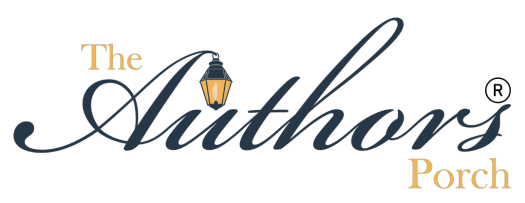
The post How’s Your Pitch appeared first on .
August 13, 2023
The Connection
The Connection by Dana Claire
My rating: 5 of 5 stars
Upon these extraterrestrials’ arrival on Earth, I’d be the first to volunteer for an encounter.
The opening scene immediately captivated my attention. Initially, I anticipated a relentless, action-packed narrative, but I was pleasantly surprised when the storyline transitioned to an environment I found nostalgic and enticing. The author masterfully generated real tension between the characters, making their magnetic attraction real to readers. The balance between veiling and unveiling the story’s central mystery was impeccable, ensuring readers remained absorbed, eager to reveal the secret.
The narrative in The Connection evoked memories of popular franchises like “Spy Kids,” “Supergirl,” “Vampire Diaries,” and “Men in Black.” However, it was evident that this tale was uniquely the author’s, showcasing a fresh world that left me yearning for more. The author has successfully crafted an alien universe that’s not only digestible but also ideally suited for adaptation into a television series. Despite its fictional nature, I found myself grinning frequently at the sheer delight the story brought me.
Want to be on our blog? It’s easy. Sign up now.
You can check out our magazine or write an article, we publish quarterly on Amazon, and it’s free for non-advertisers.
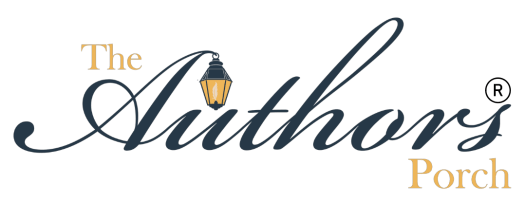
The post The Connection appeared first on .
August 7, 2023
Author Interview – Tamara Miller Davis
Tamara Miller Davis, TMD: Author of DTB, embracing life through reading, rollerblading, skiing, travel, music, dance, and uniting people. A list-making family lover at heart. We enjoyed having this Author Interview – Tamara Miller Davis for our blog. Check out this fantastic author and follow them for more amazing stories.
Tamara Miller Davis is an author, Californian fire wife, mother, substitute teacher, and U.S. Coast Guard veteran from Michigan. Tamara has published articles, participated in poetry readings, spoken on podcasts, and performed on stage via USA Today’s Storytellers Project. Her debut book, “Despite the Buzz,” won awards for contemporary romance and literary fiction.
 https://theauthorsporch.com/character-interview/When did you start writing?
https://theauthorsporch.com/character-interview/When did you start writing?I started writing as a young person. I’ve always kept a journal. It wasn’t until college, after my enlistment, that I started to publish pieces.
What was it like growing up?I grew up in northern Michigan. It was nice to live on and near lakes, in small towns, with space to wander. I have a younger brother, and we sometimes snowmobiled or biked country roads to school.
 https://theauthorsporch.com/platinum-package/How was your early life?
https://theauthorsporch.com/platinum-package/How was your early life?My early life was formative. My parents exposed my brother and me to outdoor activities and experiences that shaped my interests. They supported my community involvement at school within leadership roles, clubs, track, and cheerleading. Although they divorced when I was eleven, my parents worked hard and provided a good upbringing.
What has been the biggest influence in your career?The biggest influences on my writing path probably took place in college, where I felt stimulated and inspired by books and discussions. I was lucky to have professors who believed in and encouraged me. My husband and mother-in-law have also really supported my efforts as an author-preneur.
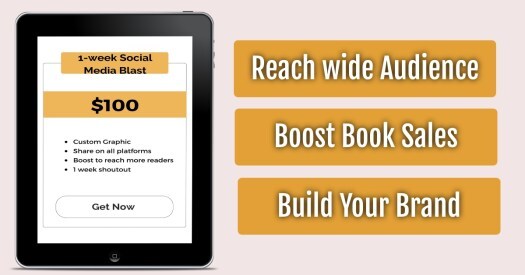 https://theauthorsporch.com/one-week-social-media-blast/
https://theauthorsporch.com/one-week-social-media-blast/Tell us about your newest release.
“Despite the Buzz” is a colorful cautionary tale concerning tech’s toll upon learning, relationships, safety, and well-being. The artful story is educational and exciting! A new high school teacher raises awareness about screen use inside her writing classroom; meanwhile, contemporary communication dramatically impacts the diverse Californian characters.
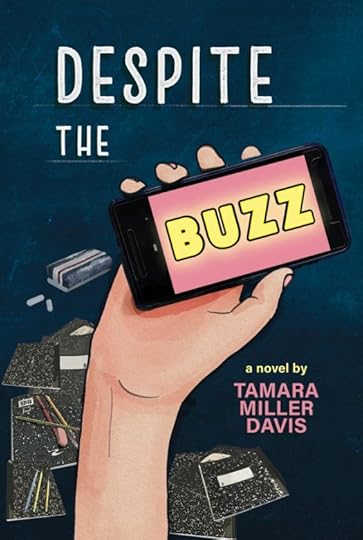 https://www.despitethebuzz.com
https://www.despitethebuzz.comWhen an intimate act is shared over social media, the resulting incident demonstrates the powerful potential in students’ pockets. By depicting demands upon teachers and providing understanding to those who grew up before current trends, this multi-generational book aims to build rapport among people from different schools of thought. The realistic and romantic fiction is recommended for readers over 14 years of age.
Which book of yours would you call your favorite child?I’ve written many articles, but I’ve only published one novel so far: “Despite the Buzz” is my book baby. She was born (released) on a Mother’s Day.
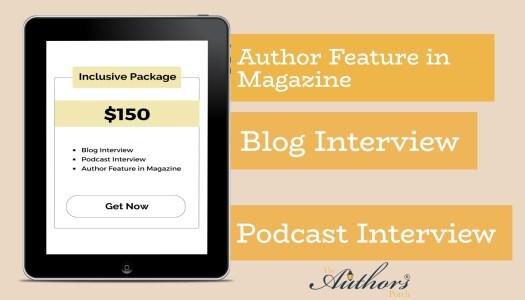 https://theauthorsporch.com/inclusive-package/What inspired you to write this book?
https://theauthorsporch.com/inclusive-package/What inspired you to write this book?Teaching and parenting inspired me to explore the subject of technology’s influence and present the topic through the filter of fiction. A variety of viewpoints speak to the complexity of issues and opportunities involved with social media and screen use. Writing the novel enabled me to creatively raise awareness around causes I care about.
What are you usually found doing when you’re not writing?Parenting, housework, substitute teaching, learning, supporting causes, attending community events, catching up with friends and family, dancing, enjoying nature, camping, beach cruising, boogie boarding.
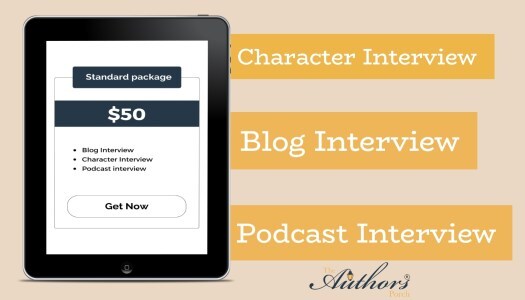 https://theauthorsporch.com/standard-package/What does your writing space look like?
https://theauthorsporch.com/standard-package/What does your writing space look like?I sit at a wooden desk near a French door with paperwork piles categorized into objectives. My journal is handy, and books are nearby. My creative workspace is decorated with writing utensils, a wonder stone, a mermaid-themed coaster, and a green army man doing a yoga pose. There is a painting above me: a bluebird rests on a birch tree branch outside her egg-filled nest.
If you wrote your autobiography, what would you name it?Away Without Leaving
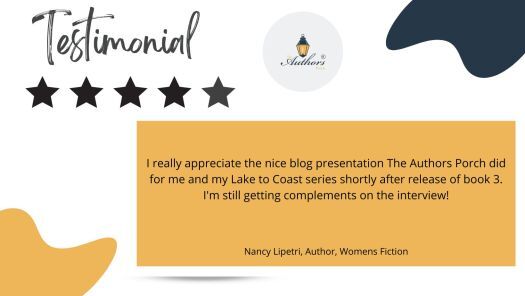 How long did it take to write your novel, and what was your process?
How long did it take to write your novel, and what was your process?4 years: it was a literary enlistment! I attended to the project, incorporated research, took breaks, went to writing conferences, came back to the story, re-dedicated myself, shared parts, added paragraphs, kept a log of words and time, paid for professional editing, developed my characters, considered my intentions, wrote a preface and epilogue, hired artists, had the mixed-media book artfully designed, decided on color print, requested feedback from beta readers, journeyed through the publication process, learned about marketing, took notes on indie authorship, mustered the courage, and birthed my debut book among friends and family.
Favorite reads?“Big Magic, Creative Living Beyond Fear” by Elizabeth Gilbert
“Daring Greatly and The Gifts of Imperfection” by Brené Brown
“The Wisdom of Sundays” by Oprah Winfrey
“To Kill a Mockingbird” by Harper Lee
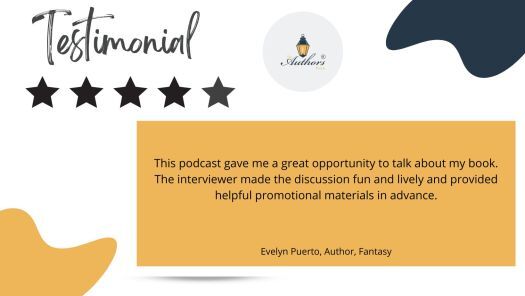 Do you have any book recommendations?
Do you have any book recommendations?“On Writing – A Memoir of the Craft” by Stephen King
“Amusing Ourselves to Death” by Neil Postman
“Alone Together” by Sherry Turkle
“Unselfie – Why Empathetic Kids Succeed in Our All-About-Me World” by Michele Borba
“A Book of American Martyrs” by Joyce Carol Oats
What’s your next big project?I am working on articles for “Northern Michigan Woman” magazine and The Ventura County Mom Collective. I would like to contribute to “Chicken Soup for the Soul.”
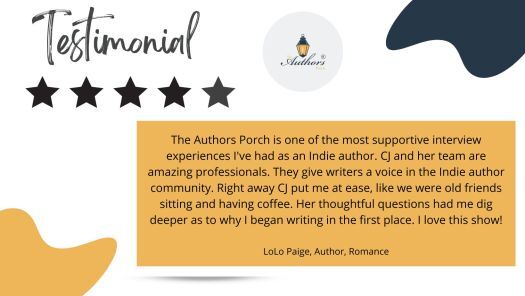 Do you have any advice for aspiring authors?
Do you have any advice for aspiring authors?Journal. You might use those idea seeds later. Write for yourself and for others. Connect with creatives. Read. Take notes or write reviews to study the craft. Practice. Envision an audience. Consider your purpose. Follow your passion. Be brave. Publish or share something. Aloud or in print.
Follow Tamara Mills Davis:
Website: https://www.despitethebuzz.com
Facebook: https://www.facebook.com/despitethebuzz
Instagram: https://www.instagram.com/tamaramillerdavis
Goodreads: https://www.goodreads.com/book/show/58341719-despite-the-buzz
LinkedIn: www.linkedin.com/in/tamara-davis-094499238
Amazon: https://www.amazon.com/author/tamara-miller-davis_2021
Want to be on our blog? It’s easy. Sign up now.
You can check out our magazine or write an article, we publish quarterly on Amazon, and it’s free for non-advertisers.

The post Author Interview – Tamara Miller Davis appeared first on .
August 5, 2023
A Balanced View
Navigating the Complexities of Traditional and Independent Publishing
To understand what path you want to take, we have to gain a balanced view between traditional publishing and self-publishing. Once you have all the information, you can make an informed decision.
Traditional Publishing Defined
Traditional publishing, or trade publishing, refers to the established system in which authors sell their book rights to a publishing company. In exchange, the publishing company takes responsibility for the book’s production, marketing, distribution, and sale. The author typically receives an advance payment before publication, followed by royalties from the sales.
The traditional publishing process often involves the following steps:
The author writes a manuscript: The author writes a whole book or a proposal, which is the idea for the book they want to write.The author gets a literary agent: While not always necessary, many authors work with literary agents to get their work noticed by publishers. The agent pitches the author’s work to publishers and negotiates contracts on the author’s behalf. Literary agents are your IN to the publishers in most cases, as the big five publishers, 99% of the time, don’t seek unsolicited manuscripts.Publisher acquires the book: If a publisher is interested, they offer the author a contract. This contract gives the publisher the right to publish and sell the book.Book production: The publisher manages the editing, design, printing, and sometimes the book’s marketing. Traditional publishers DO NOT ask the author for a dime. The traditional publisher takes care of everything and pays the author for the rights to their book because they will make money off the author and pay the author a percentage of that profit. There is a HUGE difference between vanity presses and small presses that do not have the budget like traditional publishers.Book distribution and sales: The publisher distributes the book to physical and online retailers. The author receives royalties from the sales, usually a percentage of the book’s retail price.One of the key features of traditional publishing is that the publisher assumes the financial risk of publishing the book. If the book is unsuccessful, the publisher bears the loss, not the author.
Here are some great blogs on the Pros and Cons of Traditional vs Non-Traditional publishing routes.
“What Is Traditional Publishing?” Writer’s Digest, Link.“Traditional Publishing,” Masterclass, Link.“The Pros and Cons of Traditional Publishing,” The Creative Penn, Link.“The Traditional Book Publishing Process,” Penguin Random House, Link.Let’s Define Independent Publishing
Independent publishing, also known as self-publishing, is a process where authors take on the role of the publisher. Rather than selling their book’s rights to a publishing company, the author retains them and is responsible for the entire process from writing, editing, and designing to marketing, distribution, and sales of their book.
The digital age has made self-publishing much more accessible and popular. Many platforms, like Amazon Kindle Direct Publishing (KDP), Ingramspark, D2D, Smashwords, and Lulu, make it easier for authors to publish and get their work out there.
Here’s a simplified process of independent publishing:
The author writes a book: The author is responsible for producing a completed manuscript.Author hires professionals or DIY: The author may choose to hire professional editors, cover designers, and formatters to refine their work, or they can choose to do it themselves. I would suggest doing only some things yourself as you will miss things and readers will catch them. Sure, you can be a jack of all trades but a master of none, and the proof will be in the pudding. I have first-hand experience of this.Book production: The author or their hired professionals manage the layout and design of the book, create a compelling book cover, and prepare the text for publication.Book publishing: The author chooses a self-publishing platform and publishes the book.Marketing and sales: The author is responsible for marketing their book and generating sales. They then receive royalties from those sales. Each platform has you sign a contract to use their platform, so in turn, they also get a piece of your pie because nothing is free; however, they take a lower percentage than the publishers do. There are pros and cons; look above for the pros and cons links throughout the blog post because it all comes down to how much work you want to put in.References:
“What is Self-Publishing?” Reedsy, Link.“How to Self-Publish a Book in 7 Steps,” Kindlepreneur, Link.“What is Independent Publishing,” Alliance of Independent Authors, Link.Let’s learn about the history of Traditional Publishing because you need to know where it all began to avoid repeating bad behaviors.
The history of traditional publishing is intricately linked with the development of printing technology. Here’s a brief look at its evolution:
1. Invention of the Printing Press (15th Century): The modern concept of publishing started when Johannes Gutenberg invented the Movable type printing press around the 1400s. This revolutionary technology allowed for the mass production of books, making them more accessible to the general population.
2. Rise of Publishing Houses (16th-19th Century): The first publishing houses emerged as literacy rates increased and the demand for books grew. Notable examples include Cambridge University Press (founded in 1534), Leiden University Press (founded in 1583), and Harper & Brothers (now HarperCollins, founded in 1817).
3. The Paperback Revolution (20th Century): In the early to mid-20th Century, introducing paperback books dramatically lowered book prices, further increasing accessibility to literature. This period also saw the establishment of many publishing houses that are prominent today, like Penguin Books (founded in 1935).
4. Digital Era (Late 20th – 21st Century): Digital technology significantly changed the publishing industry. eBooks emerged in the late 20th Century, offering a new format for readers. Online retailers, especially Amazon, changed the dynamics of bookselling and distribution.
5. Current Trends (21st Century): The traditional publishing model has been challenged by the rise of self-publishing and indie authors, who can now bypass publishing houses thanks to online platforms and digital technologies.
References:
“A Brief History of Book Publishing as Told by a Future Publisher,” B.K. Munn, Sequential, Link.“The History of Publishing,” Encyclopedia Britannica, Link.“The History of Publishing,” J.D. Harms, Medium, Link.Most people believe Independent Publishing is new, but it’s not. Let’s learn about its history.
Independent publishing, often synonymous with self-publishing, has a history that’s as old as the book itself. Still, its recent growth and acceptance are intrinsically linked to the advancement of technology.
1. Early Examples of Self-Publishing (Historical Times – 19th Century): Authors have been self-publishing for centuries. Notable historical figures like Benjamin Franklin and Thomas Paine self-published some of their works. In the 19th Century, authors like Walt Whitman and Virginia Woolf chose to self-publish some of their books.
2. Vanity Press Era (20th Century): Throughout the 20th Century, self-publishing was often associated with vanity presses, which charged authors high fees to publish their books. The term “vanity press” came from the perception that authors who chose this route were merely feeding their vanity, as traditional houses didn’t deem their works publishable.
3. Print-On-Demand and the Internet (Late 20th – Early 21st Century): The invention of the internet and print-on-demand technology revolutionized self-publishing. Websites like Lulu and Createspace (later merged with Amazon’s Kindle Direct Publishing) made it easier for authors to publish their books without a large upfront investment.
4. E-books and the Digital Revolution (21st Century): The rise of e-readers, most notably Amazon’s Kindle, and the introduction of e-book self-publishing platforms gave authors a cost-effective way to publish and distribute their work globally. The e-book format allowed for higher royalty rates for authors and lower prices for readers.
5. Today’s Independent Publishing (21st Century): Self-publishing has gained greater recognition and acceptance. Independent authors have seen significant success, sometimes surpassing traditionally published authors in sales and readership. Now more resources and services are available to independent authors, including professional editing, cover design, and marketing.
References:
“A Brief History of Self-Publishing,” New York Book Editors, Link.“The History of Self-Publishing,” Self-Publishing School, Link.“A History of Self-Publishing,” Victorian Web, Link.“Self-Publishing Has Become an Invaluable Force in Publishing,” The Guardian, Link.Now that you have the info, you can choose wisely and write on!
Until next time my friends
CJ
The post A Balanced View appeared first on .
July 31, 2023
Beyond the Pen
Professional organizations are what you do ‘Beyond the Pen’ and are essential to your writing career. Hear me out before you stop reading and think this isn’t for you. They provide several benefits to their members; I will discuss a few.
 Networking opportunities: Professional development: Advocacy: Career advancement:Social support:
Networking opportunities: Professional development: Advocacy: Career advancement:Social support: Let’s dig deep into these five, but don’t stop there. Look into some organizations in your area and see what they offer. You never know; it could be more than you knew was possible.
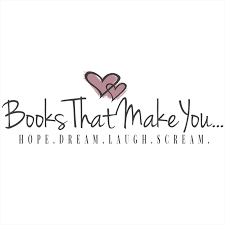
II. Network with other professionals in your field.
A. Networking opportunities for members are enormous because you never know who you will meet. These opportunities include attending conferences, joining online forums, and connecting with other writers through social media. Networking can help writers learn about new opportunities, find mentors, and build relationships with other professionals in the field. It can also help writers stay up-to-date on industry trends and best practices.
Here are some of the benefits of networking through professional writing organizations:
Learn about new opportunities when your organization hosts conferences and other events where members can learn about new opportunities in the field. This could include job openings, freelance opportunities, or new publications seeking writers.Find mentors to connect you with other writers who have more experience than you. These mentors can offer advice and support, and they can help you navigate the challenges of the writing profession.Building relationships with other professionals by networking with other writers can help you build relationships with people who can help you in your career. These relationships can lead to job opportunities, referrals, and collaborations.Stay up-to-date on industry trends with access to resources that keep you up-to-date on industry trends and best practices. This can help you stay competitive in the job market and produce high-quality work.
I have been a member of The Authors Guild since I became an author, and I have learned more about being an author than I ever thought possible. A great deal of my knowledge has come from reading their emails. The advocacy that the guild provides on our behalf is truly amazing.
I am also a member of The BookFest, Books That Make You, and BookMARCon, a few organizations that hold literary conferences educating the author and reader world. I love learning, and I am a lifelong learner. At each conference, there is something new to learn about the industry, and I get to know about it first-hand instead of waiting for the rest of the author world to catch up.
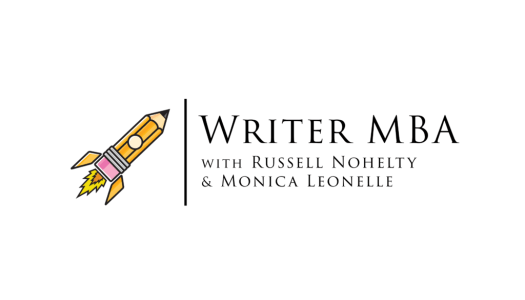
If you search for a writing group or writing guild in your town, you will find one near you. The closest one to me is 30 minutes away, but I am willing to make the trip once a month or once a quarter to network. I am planning a big signing at a local bookstore and leveraging my platforms to make it even bigger for all of us.
Through networking, I secured a position as a project manager and event producer, both of which I was qualified for but had never pursued because I was unaware of the need for such jobs in the author world. Talking to people, networking, and having organic conversations can lead to opportunities. Leverage your skills to put yourself in the right places.

III.Professional development opportunities, such as conferences, workshops, and online courses. These opportunities can help members stay up-to-date on the latest trends and best practices in their field.
Grammar and punctuationStyle and usageResearch and documentationWriting for different audiencesPitching and submitting your workMarketing and promoting your workCareer development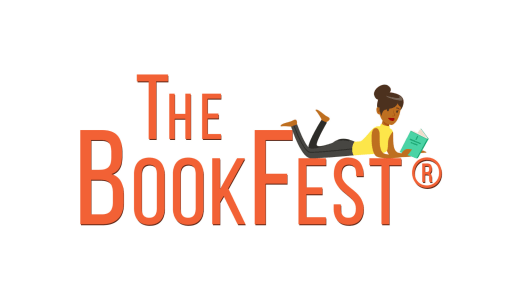
Workshops and webinars are typically led by experienced writers and editors, and they provide an opportunity to learn from the experts and get feedback on your writing. Other educational resources, such as online courses and e-books, can be helpful for writers who want to learn at their own pace.
Here are my recommended learning resources. Each I have learned from, grown because of, and continue to follow for up-to-date blog posts and/or courses.
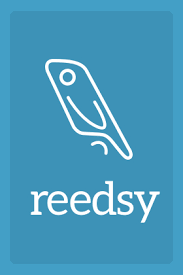
IV. Resources and support advance your career. This can include mentoring, job placement assistance, and scholarships.
A. organizations can expose authors to new publishing opportunities, agents, editors, and other industry professionals that have been vetted. One of the worst things I see within the author world is that everyone wants to provide us services, but about 80% can’t meet the mark. These organizations will steer you away from the bad. There is strength in numbers.

V. advocate for the interests of their members to government officials, the media, and the public. This can protect the rights of professionals and improve the public’s understanding of their work.
A. Recently, The Authors Guild went to bat for all writers regarding AI. They want to protect human writers’ intellectual property so that AI and those who wish to exploit our work can’t be used illegally. It’s essential to understand what AI is doing, what it’s not doing, and how you need to protect yourself. While I advocate for using AI responsibly, as I did to make this outline, I’m writing these words. The Authors Guild wants what’s best for everyone. You should check out the other advocacy that is going on without you even knowing.

VI. Sense of community and social support. This can be especially important because writing can sometimes feel lonely, but it doesn’t have to be lonely. You have a whole support network waiting for you. Here is how you can get support within these groups if they are offered.
All in all, I started this journey alone. I felt lonely and isolated and thought, I want it so bad, but I must find my tribe. I started The Authors Porch because I knew that authors liked to talk about their books. Doing that made me realize there was so much out there, and I learned from the authors I spoke to. Once I joined communities, I learned even more. Networking and joining communities and organizations changed my author career forever, and I wouldn’t change it ever. I hope you can find an organization, writing group, or tribe near you and watch how your outlook on this world will improve. Choose wisely because you don’t want to be in a toxic relationship.
Want to be on our blog? It’s easy. Sign up now.
You can check out our magazine or write an article, we publish quarterly on Amazon, and it’s free for non-advertisers.

The post Beyond the Pen appeared first on .
Carpe F*cking Diem
Carpe F*cking Diem by K.D. Miller
My rating: 5 of 5 stars
“Carpe F*cking Diem” rocked my world, and when I saw its cover on Facebook, I couldn’t help but lick my lips at how scrumptious it looked. I had no idea what the book was about, and I had no preconceived notions at all, but I fell in love with it immediately. A few weeks later, I noticed there were ARCs (Advanced Reader Copies) available, and with a cover like that, I knew I had to read it. I signed up and was shocked when I received an ARC copy.
I dove into the book, and the first chapter had me smiling like the Cheshire cat who stole the cookie from the cookie jar. I had no idea about the twists and turns it would take me on. My heart pounded out of my chest, my eyes bulged out of their sockets, and I had to take my inhaler a couple of times because I lost my breath. There were moments when I didn’t want to catch my breath because I just wanted to stay in that intense emotional state. This roller coaster ride was one I’d love to jump on again (PUN INTENDED).
K.D. Miller masterfully crafted the character of Lincoln Ashmore, making him someone every woman could fall in love with. Then there’s Savvy, whom we can’t help but want him to be with, and yet we don’t feel jealous because we see her either as a little sister or our BFF. This love story is what we all pray to have a happy ending.
Oh my gosh, I did not expect everything that happened, but I’m so glad I read it because I felt refreshed, and my soul came alive, which had been numb for a while. Great job, great story, and that cover is just fantastic!
View all my reviews
The post Carpe F*cking Diem appeared first on .
July 22, 2023
Thrive in the Indie Author World
Here are Essential Resources and Strategies to help you thrive in the Indie Author world.
Have you always wanted to write a book? If so, you’re in the right place! I wanted to write a book since middle school when my teacher thought my assignment had promise. That moment was the first time someone believed in me, and she set a fire inside that started my love for literature on a new trajectory. I’ve learned a lot along the way. I’m here to share some knowledge with you, so you can achieve your dreams.

The road to becoming a successful author is not easy, but it is incredibly rewarding. If you’re willing to put in the hard work, I know you can achieve your goals.
Here are some of the opportunities and challenges of being an indie author:
 OpportunitiesMore control over your work: As an indie author, you have complete control over your work, from the writing process to the marketing and distribution. This means you can make all the decisions that affect your book, and you don’t have to answer to anyone else.More freedom to experiment: Indie publishing gives you the freedom to experiment with different genres, styles, and marketing strategies. You can try new things without worrying about being rejected by a traditional publisher.More potential for financial success: While there is no guarantee of success, indie authors have the potential to earn more money than traditional authors. This is because you keep all of the royalties from your book sales, and you don’t have to share them with a publisher.More connection with your readers: As an indie author, you have the opportunity to connect with your readers on a personal level. You can interact with them through social media, email, and book signings. This can help you build a loyal following of readers who will support your work.
OpportunitiesMore control over your work: As an indie author, you have complete control over your work, from the writing process to the marketing and distribution. This means you can make all the decisions that affect your book, and you don’t have to answer to anyone else.More freedom to experiment: Indie publishing gives you the freedom to experiment with different genres, styles, and marketing strategies. You can try new things without worrying about being rejected by a traditional publisher.More potential for financial success: While there is no guarantee of success, indie authors have the potential to earn more money than traditional authors. This is because you keep all of the royalties from your book sales, and you don’t have to share them with a publisher.More connection with your readers: As an indie author, you have the opportunity to connect with your readers on a personal level. You can interact with them through social media, email, and book signings. This can help you build a loyal following of readers who will support your work. ChallengesMore marketing and promotion: As an indie author, you are responsible for marketing and promoting your own book. This can be a lot of work, and it can be difficult to get your book noticed in the crowded marketplace.Less exposure: Indie books are often less visible than books published by traditional publishers. This means it can be harder for indie authors to find readers.Less credibility: Some people still believe that books published by traditional publishers are more credible than indie books. This can make it difficult for indie authors to be taken seriously by the literary community.Less support: Indie authors often have less support than traditional authors. This can include things like editing, proofreading, and marketing assistance.
ChallengesMore marketing and promotion: As an indie author, you are responsible for marketing and promoting your own book. This can be a lot of work, and it can be difficult to get your book noticed in the crowded marketplace.Less exposure: Indie books are often less visible than books published by traditional publishers. This means it can be harder for indie authors to find readers.Less credibility: Some people still believe that books published by traditional publishers are more credible than indie books. This can make it difficult for indie authors to be taken seriously by the literary community.Less support: Indie authors often have less support than traditional authors. This can include things like editing, proofreading, and marketing assistance.
Despite the challenges, indie publishing can be a great way to get your work out into the world. If you’re willing to put in the work, you can achieve great success as an indie author.
I agree with you. The world is constantly changing, but it is important to be able to adapt and learn new things in order to succeed. In the world of publishing, this means keeping up with the latest trends and finding new ways to reach your audience. It also means being open to feedback and criticism and being willing to change your approach if necessary.

I am always learning new things, and I am always looking for ways to improve my skills. I believe that lifelong learning is essential for success in any field.
I have provided you with some resources that I believe will be helpful. However, it is important to remember that not everything works for everyone. Do your research, take everything with a grain of salt, and do what works best for you, your budget, and your career. Ultimately, you are the only one who is responsible for your career choices. So own it and make the most of it!

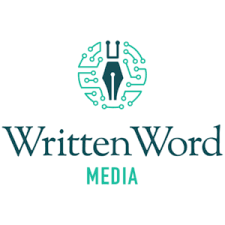
Written Word Media offers promotional services for authors, such as promo stacking and ad management on Amazon and Facebook. They have a variety of affordable plans, and their blog posts are also a great resource for authors, as they provide valuable information on industry trends. Written Word Media understands that providing educational content is essential to staying ahead of the competition and providing valuable services to its customers. This makes them an invaluable resource for authors.

Reedsy is a platform that connects authors with professional editors, proofreaders, designers, and marketers. Authors can post their projects on Reedsy and browse through a pool of qualified professionals to find the right person for the job. Reedsy also offers educational articles on a variety of topics related to writing and publishing. These articles can help authors improve their craft, learn about the publishing process, and market their books.
Here are some of the benefits of using Reedsy:
Access to a pool of qualified professionalsCompetitive ratesConvenient online platformEducational articles and resourcesIf you’re an author looking for help with your writing or publishing, Reedsy is a great resource.
Did you know that Reedsy has an online formatting tool? Check it out.

The Author Learning Center also offers a variety of resources, such as articles, blog posts, and videos, to help writers improve their craft and succeed in the publishing industry.
If you’re an aspiring or experienced author, the Author Learning Center can provide you with the tools and resources you need to reach your writing goals.
I am always trying to improve my craft and learn new things. I know that I am not perfect, and I am always open to feedback. I want to write for the reader, and I want to make sure that my writing is clear, concise, and engaging. I appreciate your advice, and I will continue to work hard to improve my writing.
Bryan Cohen: Best Page Forward

Best Page Forward is a company that offers a variety of services, including Amazon ad school and writing blurbs for you. Their Amazon ad school is a 5-day free course that teaches you everything you need to know about running successful Amazon ads. You can sign up multiple times to refresh your knowledge, or you can pay for lifetime access to the course.
Best Page Forward also offers a service where they will write blurbs for you. This is a great option if you don’t have the time or the writing skills to write your own blurbs. Best Page Forward’s blurb writers are experts in creating high-converting blurbs that will help you sell more products on Amazon.
If you’re looking to improve your Amazon ad campaigns or write better blurbs for your products, Best Page Forward is a great option. Their services are affordable and effective, and they offer a variety of courses and services to meet your needs.

Bookbrush is a tool that helps you create beautiful books and ebooks. It’s easy to use and has a lot of features that allow you to customize your book to your liking. You can add text, images, videos, and more. You can also choose from a variety of templates to get you started. Bookbrush is a great tool for anyone who wants to create a beautiful and professional-looking book.
Here are some of the features of Bookbrush:
Easy to use drag-and-drop interfaceA variety of templates to choose fromThe ability to add text, images, videos, and moreThe ability to customize your book’s designThe ability to export your book in a variety of formatsIf you’re looking for a tool to help you create beautiful books and ebooks, Bookbrush is a great option.
BookBrush also just started their Hourly Concepts, where you can get “Design For You” graphics by a professional designer at a fraction of the cost. These designs can be used in Amazon A+ content, TikTok Videos, Reels, Book Covers, and so much more. BookBrush can become your one-stop shop for book graphics.
On top of all the graphics, BookBrush has a fantastic blog that teaches you how to use their services to make your own graphics and marketing because they are all about marketing, which is why they have created BookMARCon, which will be held virtually on August 11-13, 2023 and it’s the worlds largest virtual marketing conference bringing in 16 agents for authors to pitch to.

Looking for a PR firm to represent you that will get you in front of the most dynamic of crowds and is the most trusted in the business? Check out Black Chateau, which is the parent company of Books That Make You and The BookFest. You will get on podcasts worldwide, be booked on tours, along with understand what it’s like to have a white glove service.

Books That Make You is a community for readers of all levels. They provide bookish events, articles, and news to help everyone thrive in the book community. The BookFest is a biannual event sponsored by Books That Make You. It is viewed all over the world and brings together talent that most people would never have the chance to meet, all for free. You can pitch The BookFest an idea for a panel or talk for a chance to speak at the event. This opportunity is fantastic, and the learning experience is unparalleled.
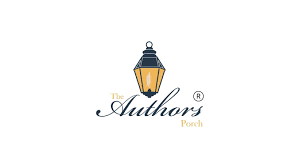
The Authors Porch is a community for authors of all levels of experience. The Facebook Group is a place where authors can connect with each other, ask questions, and share advice. The free services offered by The Authors Porch include a blog, a magazine, and a podcast. The blog provides educational content on topics such as writing, publishing, and marketing. The magazine features interviews with authors, book reviews, and articles on the writing life. The podcast interviews authors about their writing process and journey to publication. The Authors Porch also offers a few paid services, such as character interviews and paid advertisements. However, the focus of the organization is on providing free resources and support to authors.
Monica and Russell – Kickstarter & Going Wide:

Monica Leonell and Russell Nohelty are accomplished authors and titans within the indie author world. They teamed up to create the Writer MBA, a program that teaches aspiring authors about the business of writing. The program covers a wide range of topics, including going wide, publishing, Kickstarter, and marketing. They have put in the hard work to hone their skills and build successful careers as authors, teachers, and industry professionals. They are also generous with their knowledge and experience, and they are always willing to help others succeed. I am grateful for their mentorship and guidance, and I am proud to be a part of the Writer MBA community.
Romance with Me Books – ARC/Beta/Tours
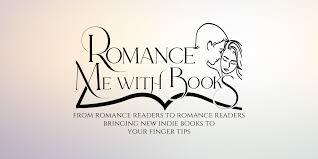
I came across Romance with Me Books through a giveaway opportunity to build my newsletter list. Her services were fantastic, so I checked out her website and saw that she offers many more. I chatted with her and found out that she is a lovely, professional, and highly capable person. If you’re a romance author, you need her in your corner for promotion. She can get the job done and promote the hell out of your book.
That’s All, Folks
I know there’s so much more to learn about being an indie author, but I can’t tell you everything. You’ll discover more along the way, and you’ll use some of what you learn and leave some behind. The important thing is to define your career your way. That’s the greatest thing about being an indie author – you get to choose!
So put in the work, be a good human (like Russell says), and always give back to the community. We’re a melting pot of good humans, and the bad ones sort themselves out quickly. Just don’t worry about them.
I hope this helps you in some way. Good luck!
Until next time my friends.
CJ
The post Thrive in the Indie Author World appeared first on .
July 21, 2023
Author Interview – Aimee Shaye
Aimee Shaye, a no spice fantasy author who enjoys board games, coffee, and getting lost in her imagination. We enjoyed having this Author Interview – Aimee Shaye, for our blog. Check out this fantastic author and follow them for more amazing stories.
I was born and raised in a small part of Brooklyn, New York known as Greenpoint. Perhaps you’ve heard of it now. MJ in Spiderman worked at Peter Pan’s, a donut shoppe I grew up loving as a kid. Even Drew Barrymore has been there now. I am still in New York, not too far from where I grew up. At home, it’s just me, my husband, my parents, and the cutest cockapoo in the world, Rusty. My family doesn’t end there, though. I am the youngest of three children with a brother and sister who are older than me. We are a close knit family who support each other and enjoy spending time together, especially during the holidays and impromptu family game nights that almost always happen because the kids always want to play games after eating dinner!
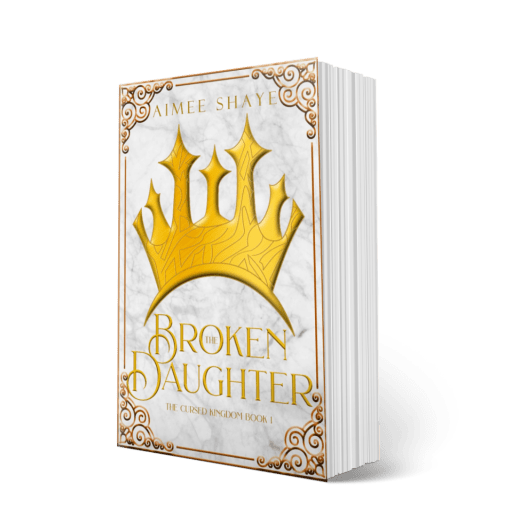 http://www.facebook.com/aimeeshaye08
http://www.facebook.com/aimeeshaye08During the day, I am an ELA teacher. I often joke that I loved school so much, I never wanted to leave! What better way to spend my day than bestowing my love and passion for reading on the next generations to come! When I’m not writing my no spice fantasy books, I can be found at my mom’s snack table with my husband and dad playing games such as Wits End, Clue, Sorry, Scrabble, and most recently, Boggle! I can also be found playing with Rusty, sitting at the dining room table with my husband enjoying a game of Oolong, Risk, Villainous, or one of the many Monopolies we own. You can image game night gets pretty competitive at home! When I’m not at home, I enjoy going to the mall, hanging out at the beach, or just going for a stroll in the park. I enjoy adventure and traveling and have been to Spain, Morocco, France, Italy, Vatican City, Capri, Rhode Island, Georgia, Maryland, and Washington D.C. Exploring the world and all its cultures is exciting and take my experiences and wrap them into my characters. I look at the world as one long novel and we are all characters living out our stories.
When did you start writing?You’ve probably heard this from many authors and I’m sure it’s how we all break the ice, haha! I started writing when I was a young, maybe about 6 or 7. I have this very distinct memory of being at my mom’s workplace (a bank) and writing a story about a cat and dog on beige construction paper. That day, mom showed me how to use the copy machine (I must have been about 9 or 10 at this time) and I made copies for everyone in her office. I wonder if any of them still have the story! I certainly don’t, haha!
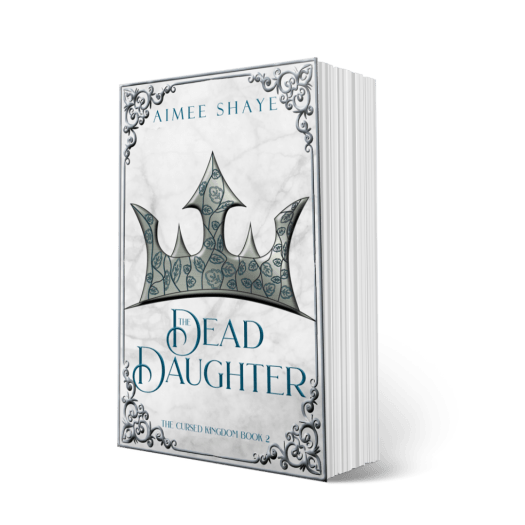 http://www.tiktok.com/@aimeeshayeauthorWhat was it like growing up?
http://www.tiktok.com/@aimeeshayeauthorWhat was it like growing up?Growing up was so much fun; it still is! I’m only 30 so I feel like I still have a lot of growing up to do, haha! My family is mixed heritage. My dad is Guyanese and Indian and my mom is Italian, Polish, Irish, and German. We got such a mix of food, music, and language that a passion for exploring other cultures and countries was almost innate. Like I have to do it because it’s part of my very existence.
Our extended families are also huge (my dad is one of nine) so you can just imagine the parties we would have with all the food, signing, and dancing! And man oh man do I love to dance! We were always out with our parents as well whether we were playing or watching sports (LET’S GO METS), going to an amusement park—Coney Island and Rye PlayLand were both a must every summer—or on the road traveling to Washington D.C. or Canada. We were always in the park, too. While dad relaxed after a hard day’s work, mom and grandma would take us to the park. Sometimes dad would come too and it was just always a blast. Very wholesome.
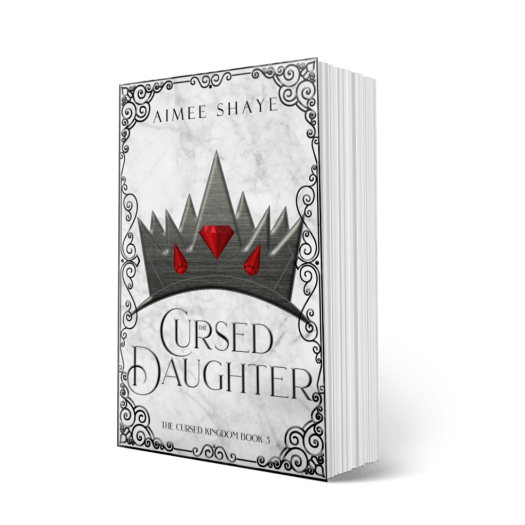 http://www.tiktok.com/@aimeeshayeauthorHow was your early life?
http://www.tiktok.com/@aimeeshayeauthorHow was your early life?I’m not sure how to answer this, honestly. I still feel like I’m in my early life. Yes, I accomplished so much and have gone through life for the past thirty years, but I don’t feel as if I’ve lived quite long enough to be past my early life. What I can say, though, is that so far it’s been amazing! I did a lot of traveling through high school which was when I visited Europe as I mentioned in the bio part. In my childhood, I also met some forever friends who have been in my life since age 3, 13, 14, 15, and 21. These friends have taught me so much about myself and help me grow in ways I can only be thankful for. I also met the love of my life at 18 and we’ve been married for the past 5 years. He’s also my cover designer and has been so supportive of my careers.
What has been the biggest influence in your career?The biggest influence in my career has been my parents. They always instilled in us that when we think about making a living, it is best to do what we are passionate about and what we love or else getting up and going to work in the morning would be a chore. They taught me to push my limits and be the best that I can be. While writing was secondary to getting an education and steady work to support myself, once I was settled into a steady career, they were proud of my writing. In fact, my dad tells everyone he knows about my books and my mom has a hand in helping me plan and write them.
 https://theauthorsporch.com/home/be-on-our-blog/
https://theauthorsporch.com/home/be-on-our-blog/Tell us about your newest release.
My newest release is coming September 30, 2023. It is young adult high fantasy novel titled The Fall of Ahilon (Zaure’s Reign Book 1). I planned out and began to write it for my thesis in 2021. The Fall of Ahilon follows eighteen year old Princess Zaure as she flees her kingdom on her parents’ orders during an attack. On her journey, she discovers patience, powerful magic surging inside her, and lasting friendships. This book is made of rich world building surrounding seven kingdoms each housed by different fantastical creatures such as elves, fae, dwarves, trolls, animal people, orcs, and humans. It also features a made up Elvish tongue I created using parts of Hindi, Arabic, and Polish words.
I broke all the rules of language with this one, haha! There is also a slow burn/budding romance between the main character, Zaure, and a hero, Torin, who protects her on her journey to Rinekeep, a sanctuary town where she will be able to learn more about her magic and get some training before heading back to her kingdom to see all she left behind. With the help of Cagdas, a Fae warrior from Ahilon sent to protect and watch over her, Zaure will learn of her true potential.
 https://theauthorsporch.com/podcast/Which book of yours would you call your favorite child?
https://theauthorsporch.com/podcast/Which book of yours would you call your favorite child?The Fall of Ahilon is my favorite child. I spent so many hours working on it day in and day out. So many people had a hand in creating the story and fleshing it out. Many have told me the story is rich and enthralling, more so than anything else I’d ever written and I believe it to be true. Ahilon has been through so many critiques because I want it to be the turning point of my career and I hope I give it the justice it deserves.
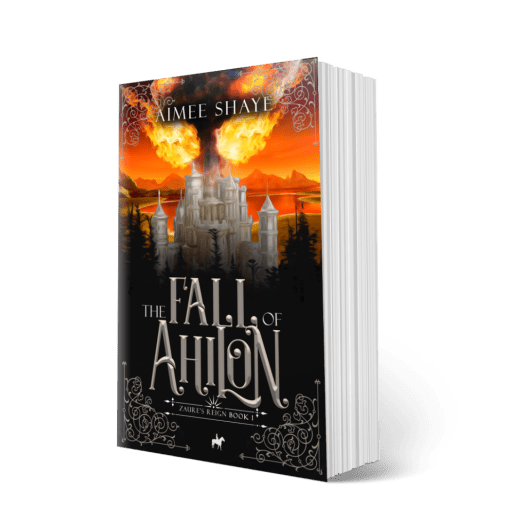 http://www.instagram.com/aimeeshayeauthorWhat inspired you to write this book?
http://www.instagram.com/aimeeshayeauthorWhat inspired you to write this book?A Tumblr post I saw about unlikely heroes when I was trying to figure out what I wanted to write my thesis on. I remember telling my husband: what if a sorcerer who has no control of his magic, an acerbic fae warrior who has no feelings, and a bard who plays the violin and sings only war tunes come together to help save a princess from an attack on her kingdom. He absolutely loved the idea and even though Ahilon strayed a bit from my initial thought process, the stray was natural and made sense.
What are you usually found doing when you’re not writing?When I’m not writing, I can be found watching TV or streaming shows like Supernatural, Dynasty, Full House, Fresh Prince, or Gilmore Girls. I also enjoy sitting on the couch reading a book or playing board games with my family, running around the house with the dog, and playing Pokemon Go
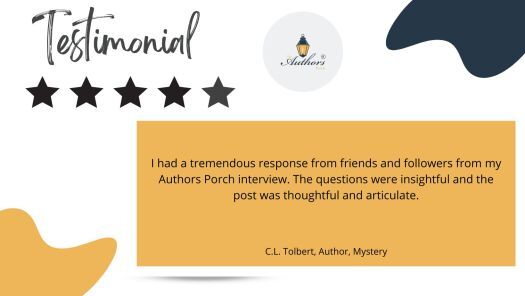 https://theauthorsporch.com/character-interview/What does your writing space look like?
https://theauthorsporch.com/character-interview/What does your writing space look like?My writing space is nonexistent. I’m either on the couch with a snack table or with my laptop on my lap or in my bed with the laptop on my lap. I know, it’s a little unorthodox but I do my best work when I’m comfy!
If you wrote your autobiography, what would you name it?The Many Lives of Aimee Shaye. Is that corny? I feel like it’s corny!
 https://theauthorsporch.com/home/break-out-of-your-skin/How long did it take to write your novel, and what was your process?
https://theauthorsporch.com/home/break-out-of-your-skin/How long did it take to write your novel, and what was your process?It took me two years to write The Fall of Ahilon because I was developing it for my thesis class when I was finishing an MFA in English and Creative Writing. My process started with an outline, then a critique on two chapters at a time until the class finished. After that, I would write and share what I wrote with my husband and mom to see what they thought. They gave me feedback and tips and I implemented it. After I finished the first draft, I sent my book out to Alpha readers who gave me valuable feedback, then Beta readers who did the same, and finally it’s with its editor!
Favorite reads?The Dark Hunter Series by Sherrilyn Kenyon; The Blue Bloods series by Melissa de la Cruz: Once Upon a Broken Heart and Ballad of Never After by Stephanie Garber (just to name a few).
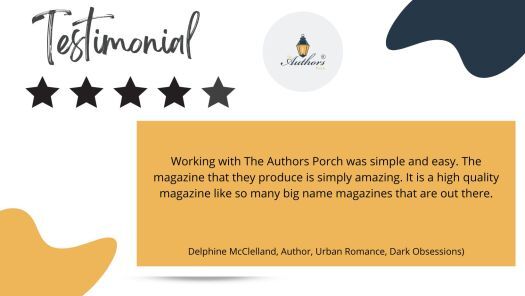 https://theauthorsporch.com/the-authors-porch-magazine/Do you have any book recommendations?
https://theauthorsporch.com/the-authors-porch-magazine/Do you have any book recommendations?Any books by Alka Joshi, Sejal Badani, Stacey Lee, Sarah M Cradit, Casey L Bond, and Rebecca L Garcia
What’s your next big project?My next big project is an Indian inspired fantasy re-imaging of my favorite Shakespearean tragedies!
Do you have any advice for aspiring authors?Yes! You have to be true to yourself and enjoy what you’re writing. Make sure you read A LOT and figure out your market and tropes before hand so you don’t struggle to find footing when you’re done.That’s why it’s important for you to be passionate about your story. You’re going to have to push it and you want your readers to see your passion so they can love it just as much as you do!
Follow Aimee:www.tiktok.com/@aimeeshayeauthor
www.instagram.com/aimeeshayeauthor
Want to be on our blog? It’s easy. Sign up now.
You can check out our magazine or write an article, we publish quarterly on Amazon, and it’s free for non-advertisers.

The post Author Interview – Aimee Shaye appeared first on .
July 20, 2023
Author Interview – Mary Camarillo
Mary Camarillo is an award-winning novelist who writes Southern California stories at a desk in Huntington Beach, California. She loves hearing from readers and talking to book clubs, in person, if possible, or online. Riley, her 15-pound Flame Point Siamese roommate/manager of marketing, might even make an online appearance if he’s in the mood. We enjoyed having this Author Interview – Mary Camarillo, for our blog. Check out this fantastic author and follow them for more amazing stories.
Mary Camarillo is the author of the award-winning novel “The Lockhart Women.” Her awards include the 2022 Indie Author Project Award for California Adult Fiction, the 2022 Willa Literary Award Finalist in Multiform Fiction, the 2021 First Place Award in the Next Generation Indies for First Fiction, the 2022 Finalist for the Screencraft Cinematic Book Award, and the 2021 Finalist in the American Book Awards in Women’s Fiction. Her second novel “Those People Behind Us” will be published in October of 2023. Her poems and short fiction have appeared in publications such as TAB Journal, 166 Palms, Sonora Review, and The Ear.
Mary writes about living in Southern California, a place she’s called home for more than fifty-five years and is still trying to understand. She had a long career with the postal service, which might be genetic—both her grandfathers were railway mail clerks. She sorted mail, sold stamps, worked in the accounting office, and went to night school, eventually earning a degree in business administration, a CPA license, and a Certificate in Internal Auditing.
She currently serves on the advisory boards of Citric Acid, An Orange County Literary Arts Quarterly, and LibroMobile, An Arts Cooperative and Bookstore in Santa Ana, California. She’s a member of Women Writing the West, Women Who Submit, and Women for Orange County. Mary lives in Huntington Beach, California with her husband, who plays ukulele, and their terrorist cat Riley, who makes frequent appearances on Instagram.
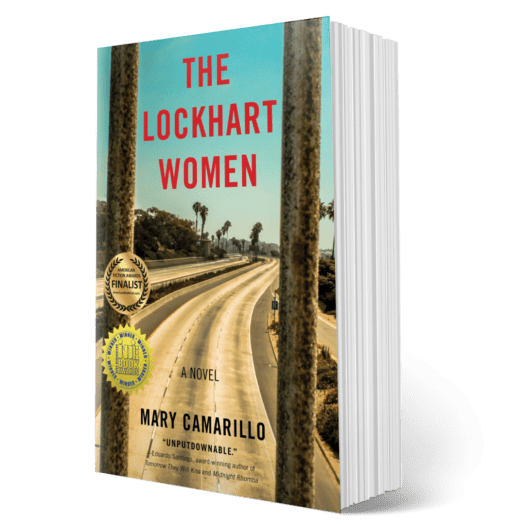 https://marycamarillo.com/When did you start writing?
https://marycamarillo.com/When did you start writing?I wrote poems and short stories as a child. In high school, I edited the literary magazine and wrote for the school newspaper. I had an idea that I’d eventually major in journalism but I unfortunately let a sour teacher discourage me from that idea. I kept writing poems and have always been a voracious reader. The last part of my working career was as a government auditor. I wrote and edited countless audit reports which surprisingly gave me the confidence to try my hand at writing fiction. Audit reports describe a condition that needs improvement and must explain the cause (why this happened) and the effect (who the heck cares?) There are similarities in writing fiction. The reader needs to understand why the characters behave as they do and the story needs to be compelling for the reader to care enough to continue to read. And the best fiction, in my opinion, tells the truth, as audit reports do, although writing fiction is definitely much more fun.
 https://theauthorsporch.com/home/be-on-our-blog/What was it like growing up?
https://theauthorsporch.com/home/be-on-our-blog/What was it like growing up?I’m the oldest of three children, with two younger brothers. My family has lived in or near Columbia, South Carolina, going back to pre-Civil War days. My dad was a chemical engineer for Douglas Aircraft and my mom was a homemaker. They loved music and plays and were avid readers who took us to the library. I checked out as many books as allowed, read them all and went back for more. I played piano, was a Girl Scout, loved the Beatles, and hated wearing glasses.
 https://theauthorsporch.com/podcast/How was your early life?
https://theauthorsporch.com/podcast/How was your early life?My dad was transferred to Santa Monica, California when I was fourteen. All we knew about California was from surf movies and the Beach Boys music. We thought everyone lived on the beach and knew movie stars. We first lived in Reseda in the San Fernando Valley, which was nowhere near the beach or any movie stars although I was thrilled to get to see the Beatles at Dodger Stadium. I didn’t go to college after high school, I went to work for the postal service. I never planned to make a career there but I stayed on for many reasons. I made life long friends. I met my husband. And I found a variety of types of work to do, from sorting mail to selling stamps, from working in the accounting office to managing the finance department. I ended my career as a CPA and Audit Manager for the Office of Inspector General.
 https://theauthorsporch.com/character-interview/What has been the biggest influence in your career?
https://theauthorsporch.com/character-interview/What has been the biggest influence in your career?My parents were resourceful, resilient people who reinvented themselves many times over their long lives. They grew up in the Great Depression, lived through World War II, and raised teenagers during the sixties. Leaving their mothers, sisters, brother, cousins, aunts, uncles, and friends behind when we moved to California must have been traumatic for them but as a self-absorbed 14-year-old, I never considered what they went through. My dad was laid off two years after he was transferred to California. He and my mother started their own offset printing business. They eventually sold that business, moved to Oregon and started another new life, then returned to California twenty years ago. Witnessing their flexibility, their ability to find community, and to live lives rich in experiences was completely inspirational to me.
 https://theauthorsporch.com/home/break-out-of-your-skin/
https://theauthorsporch.com/home/break-out-of-your-skin/Tell us about your newest release.
“Those People Behind Us” is set in the summer of 2017 in the fictional city of Wellington Beach, California, a suburban coastal town increasingly divided by politics, protests, and escalating housing prices. These divisions change the lives of five neighbors as they search for home and community in a neighborhood where no one can agree on who belongs.
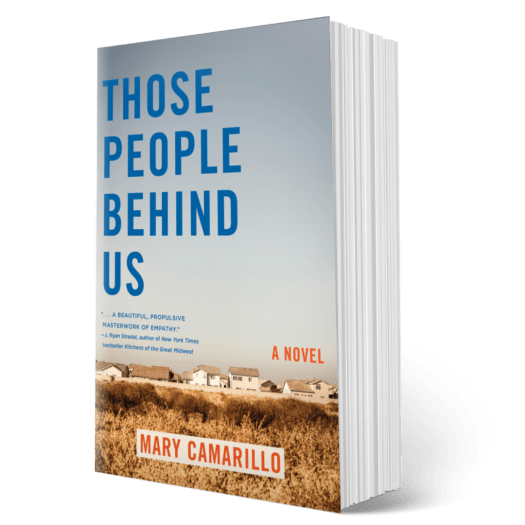 https://marycamarillo.com/Which book of yours would you call your favorite child?
https://marycamarillo.com/Which book of yours would you call your favorite child?That’s not a fair question! I’m giving my new book the most attention these days because it’s releasing in three months. My first novel still has my heart, though. I learned so much from writing, publishing and promoting “The Lockhart Women.”
 https://theauthorsporch.com/the-authors-porch-magazine/What inspired you to write this book?
https://theauthorsporch.com/the-authors-porch-magazine/What inspired you to write this book?“Those People Behind Us” was inspired by my neighborhood. During the pandemic, my husband and I spent a lot of time walking the streets and making up stories about the lives of our neighbors. We heard someone pounding on a drum set and decided it must be a kid who wanted to be a rock and roller. One of our neighbors always left all of their doors wide open, day and night, and we worried something bad could easily happen to them. We were curious about the flags our neighbors flew, what they thought about, and how they spent their days. We also saw a lot of suburban wildlife on our walks–coyotes, possums, skunks, racoons, herons, hummingbirds–and started paying more attention to the types of trees and plant life. Most of this ended up in “Those People Behind Us” but I fictionalized actual names to make the story more universal.
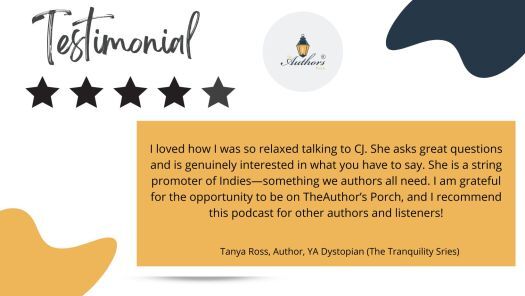 https://theauthorsporch.com/home/promotional-package/What are you usually found doing when you’re not writing?
https://theauthorsporch.com/home/promotional-package/What are you usually found doing when you’re not writing?Lately, I’ve been spending a lot of time dealing with the aftermath of my father’s death. He died in February of this year at the age of 100 and one-half years and I miss him fiercely. There’s been a lot of paperwork and follow up, dealing with banks and realtors and going through possessions and photographs. I’m looking forward to planning some travel once all of this is behind me. In the meantime, you can find me reading, listening to music, or going out to hear live music.
 What does your writing space look like?
What does your writing space look like?Organized chaos.
 If you wrote your autobiography, what would you name it?
If you wrote your autobiography, what would you name it? This is one reason I haven’t written a memoir. I have no idea what I’d call it. “From Carolina to California?” “Still Confused in SoCal?”
 How long did it take to write your novel, and what was your process?
How long did it take to write your novel, and what was your process?My first novel took seven years. My second novel took about three years. My process is to start with characters, give them a lot of problems, and see what decisions they make. I don’t use an outline until much later in the process. It would probably be more efficient if I knew where the story was going earlier in the process, but the fun for me is the surprise in figuring it all out.
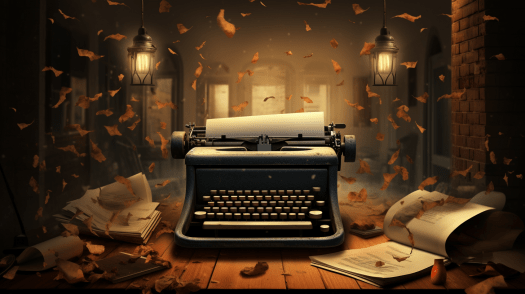 Favorite reads?
Favorite reads?“Olive Kitteridge” by Elizabeth Strout. “Shaky Town” by Lou Mathews. “Great Kitchens of the Midwest” by J. Ryan Stradal
 Do you have any book recommendations?
Do you have any book recommendations?J. Ryan Sradal’s new book “Saturday Night at the Lakeside Supper Club” is wonderful. I just read “Rebecca” by Daphne Du Maurier and loved it. I’m a huge fan of Louise Errdich, too, and really admired “The Sentence.”
 What’s your next big project?
What’s your next big project?Too soon to say much but I’ve been fooling around with ghost stories set in the 70s, an era which has just recently qualified as historical fiction.
 Do you have any advice for aspiring authors?
Do you have any advice for aspiring authors?1. Find a writing workshop but learn to trust your own voice.
2. Don’t be afraid to revise. You can only make it necessary to revise again.
3. Read widely. Read like writing is your job.
4. Support your local writing community. Writers are incredibly supportive of each other.
5. Support your local independent bookstores. It’s against the law to go into one and not buy something.
Follow Mary:https://www.facebook.com/marypcamarillo
https://www.instagram.com/marycamel13/
Want to be on our blog? It’s easy. Sign up now.
You can check out our magazine or write an article, we publish quarterly on Amazon, and it’s free for non-advertisers.

The post Author Interview – Mary Camarillo appeared first on .
July 15, 2023
Building a Strong Author Community
Why Connection and Collaboration Matter in Building a strong author community.
 https://theauthorsporch.com/character-interview/
https://theauthorsporch.com/character-interview/I’m excited to talk to you about this subject today because I haven’t gotten here by myself. From day one, I’ve built my platform on collaboration over competition. That’s why The Authors Porch is for authors to sit, hang out, get a good cup of whatever it is you like to drink, and where “Every Good Conversation Happens.” Let’s Dive in.
 https://theauthorsporch.com/podcast/I. The Benefits of Connecting with Fellow Authors
https://theauthorsporch.com/podcast/I. The Benefits of Connecting with Fellow AuthorsConnecting with other authors can be very beneficial for several reasons. Here are some of the advantages:
 https://theauthorsporch.com/home/be-on-our-blog/Sharing experiences, challenges, and successes. It can be helpful to talk to other authors about the challenges and successes they have faced in their careers. This can provide valuable insights and advice to help you overcome challenges and achieve your goals. You don’t have to repeat the mistakes of others. Asking questions in a safe forum or established support groups can help avoid pitfalls. You also need supporters; writing can be a lonely career path, so let us cheer you on.
https://theauthorsporch.com/home/be-on-our-blog/Sharing experiences, challenges, and successes. It can be helpful to talk to other authors about the challenges and successes they have faced in their careers. This can provide valuable insights and advice to help you overcome challenges and achieve your goals. You don’t have to repeat the mistakes of others. Asking questions in a safe forum or established support groups can help avoid pitfalls. You also need supporters; writing can be a lonely career path, so let us cheer you on.
 https://theauthorsporch.com/home/break-out-of-your-skin/Finding inspiration and motivation from like-minded individuals. Surrounding yourself with other authors can be a great way to find inspiration and motivation. When you see other people who are passionate about writing and achieving success, it can help you stay motivated and focused on your goals. This can also be true on the opposite side of the coin. Protect your peace, don’t jump on the negative Nancy bandwagon. Avoid the places where everyone is complaining. Sure, there are downsides to this world, but focus on the positive, and you will always be catapulted on the forward trajectory. When you focus on the negative, you stay stuck. Choose your vices wisely.
https://theauthorsporch.com/home/break-out-of-your-skin/Finding inspiration and motivation from like-minded individuals. Surrounding yourself with other authors can be a great way to find inspiration and motivation. When you see other people who are passionate about writing and achieving success, it can help you stay motivated and focused on your goals. This can also be true on the opposite side of the coin. Protect your peace, don’t jump on the negative Nancy bandwagon. Avoid the places where everyone is complaining. Sure, there are downsides to this world, but focus on the positive, and you will always be catapulted on the forward trajectory. When you focus on the negative, you stay stuck. Choose your vices wisely.
 https://theauthorsporch.com/the-authors-porch-magazine/Building a network of industry professionals and potential collaborators. Connecting with other authors can help you build a network of industry professionals and potential collaborators. This can help you find opportunities, get feedback on your work, and find support as you navigate the publishing industry. Connecting with fellow authors has been how I have led my career and what has been the greatest part of my journey. I’ve met amazing people who I’ve collaborated with on Podcasts, books, and business opportunities. You name it. My career wouldn’t be as fruitful had it not been for people who believed in my gumption and skills. Get out there, but ensure you give and receive the same amount. Some people will take without giving. Don’t be afraid to hold people to the fire.
https://theauthorsporch.com/the-authors-porch-magazine/Building a network of industry professionals and potential collaborators. Connecting with other authors can help you build a network of industry professionals and potential collaborators. This can help you find opportunities, get feedback on your work, and find support as you navigate the publishing industry. Connecting with fellow authors has been how I have led my career and what has been the greatest part of my journey. I’ve met amazing people who I’ve collaborated with on Podcasts, books, and business opportunities. You name it. My career wouldn’t be as fruitful had it not been for people who believed in my gumption and skills. Get out there, but ensure you give and receive the same amount. Some people will take without giving. Don’t be afraid to hold people to the fire.
 https://theauthorsporch.com/home/promotional-package/Gaining valuable feedback and constructive criticism. Feedback from other authors can be very helpful, as they can offer valuable insights into your writing and help you improve your craft. However, it is essential to remember that everyone has an opinion, and not all will be helpful or constructive. It is crucial to have a thick skin when receiving feedback and to discern between helpful and unhelpful advice. Some people will offer feedback that is personal and has nothing to do with your craft, and it is vital to be able to take it with a grain of salt and keep moving. Ultimately, the most important thing is listening to all feedback, even if you disagree. You may learn something from it; what’s the old saying, “You learn from the good and the bad.”
https://theauthorsporch.com/home/promotional-package/Gaining valuable feedback and constructive criticism. Feedback from other authors can be very helpful, as they can offer valuable insights into your writing and help you improve your craft. However, it is essential to remember that everyone has an opinion, and not all will be helpful or constructive. It is crucial to have a thick skin when receiving feedback and to discern between helpful and unhelpful advice. Some people will offer feedback that is personal and has nothing to do with your craft, and it is vital to be able to take it with a grain of salt and keep moving. Ultimately, the most important thing is listening to all feedback, even if you disagree. You may learn something from it; what’s the old saying, “You learn from the good and the bad.”
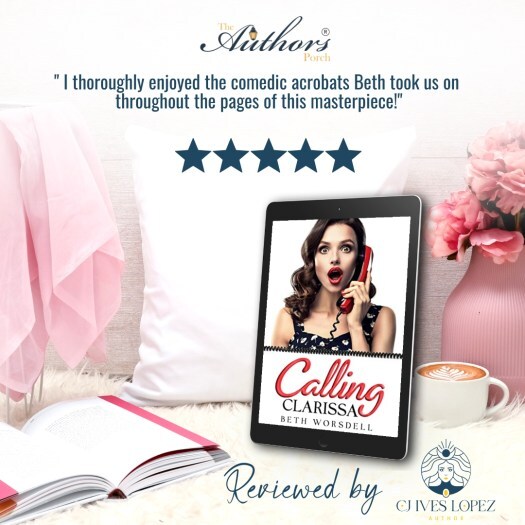 https://theauthorsporch.com/2023/05/29/calling-clarissa/II. Forming Supportive Communities
https://theauthorsporch.com/2023/05/29/calling-clarissa/II. Forming Supportive CommunitiesAuthors can form supportive communities by reaching out to other writers and connecting with them online or in person. There are many ways to communicate with other writers; the most important thing is to find a supportive and helpful community.
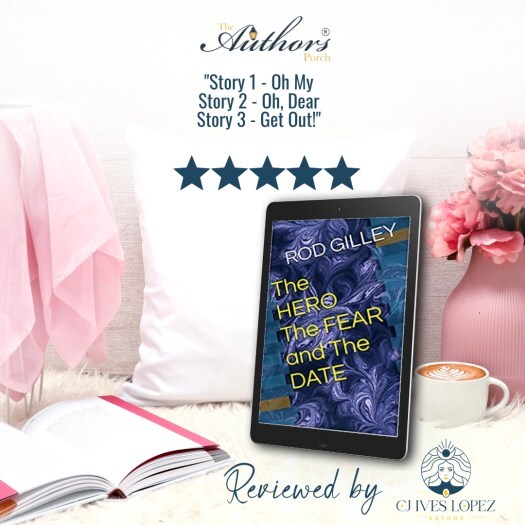 https://theauthorsporch.com/2023/05/29/the-hero-the-fear-and-the-date/III. Collaborating to Enhance Writing Skills
https://theauthorsporch.com/2023/05/29/the-hero-the-fear-and-the-date/III. Collaborating to Enhance Writing SkillsIf you’re not collaborating, you’re isolating yourself.
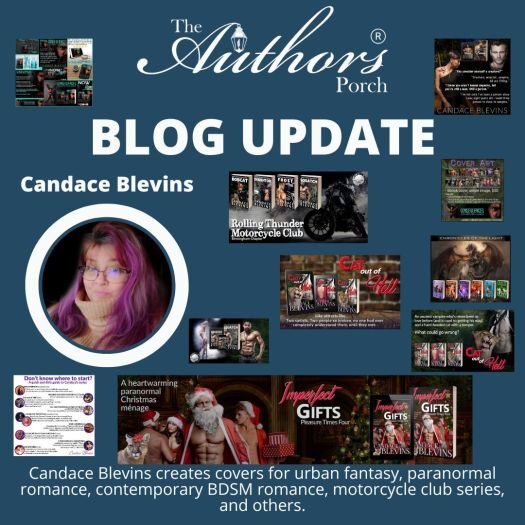 https://theauthorsporch.com/2023/05/08/cover-designer-interview-candace-blevins/Co-writing projects: Sharing the workload and tapping into diverse strengths. When two or more authors work together on a project, they can each contribute their own unique skills and talents. This helps create a more well-rounded and polished final product. Additionally, co-writing can be a great way to motivate and support each other, especially when the going gets tough. Pick your partners wisely. It’s basically like a marriage. You don’t want to deal with the aftermath of a writing divorce. My advice is to make sure the contracts are lined out before you write and that you know what you’re getting into. I have a great understanding with my co-authors, and it’s because we know our roles, our contracts are solid, and we respect each other. No personal parts of our lives get involved with our writing. Sometimes, business doesn’t mix with pleasure. The funny thing is, one co-writer is a friend, and the other is my spouse; however, a business first is always with me, and it’s worked out fantastic. I’ve found a way to create a unique co-authoring partnership and personal relationship becuase of it.
https://theauthorsporch.com/2023/05/08/cover-designer-interview-candace-blevins/Co-writing projects: Sharing the workload and tapping into diverse strengths. When two or more authors work together on a project, they can each contribute their own unique skills and talents. This helps create a more well-rounded and polished final product. Additionally, co-writing can be a great way to motivate and support each other, especially when the going gets tough. Pick your partners wisely. It’s basically like a marriage. You don’t want to deal with the aftermath of a writing divorce. My advice is to make sure the contracts are lined out before you write and that you know what you’re getting into. I have a great understanding with my co-authors, and it’s because we know our roles, our contracts are solid, and we respect each other. No personal parts of our lives get involved with our writing. Sometimes, business doesn’t mix with pleasure. The funny thing is, one co-writer is a friend, and the other is my spouse; however, a business first is always with me, and it’s worked out fantastic. I’ve found a way to create a unique co-authoring partnership and personal relationship becuase of it.
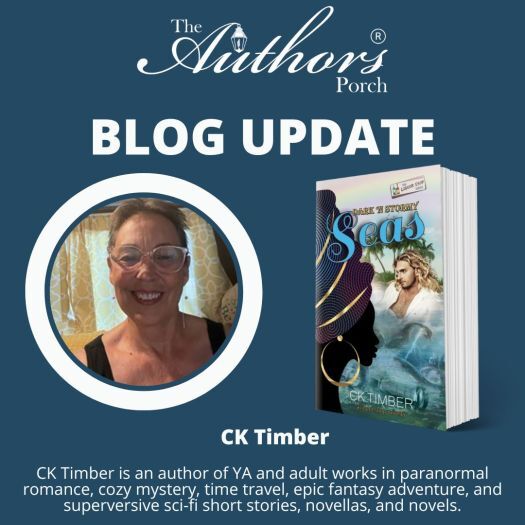 https://theauthorsporch.com/2023/05/08/author-interview-ck-timber/Joint writing workshops or retreats: Learning from others and fostering creativity. Writing workshops and retreats are great opportunities to learn from other writers and boost your own imagination. You can participate in workshops and retreats in person or online. Maybe I’m a little biased, but I recommend The BookFest and BookMARCon first and foremost becuase they are online, and you know I love my online workshops. You can simply type in writing workshops and find out so many others in person and online. You can also ask in our Facebook Group, The Authors On The Porch; people will come out of the wickets to help.
https://theauthorsporch.com/2023/05/08/author-interview-ck-timber/Joint writing workshops or retreats: Learning from others and fostering creativity. Writing workshops and retreats are great opportunities to learn from other writers and boost your own imagination. You can participate in workshops and retreats in person or online. Maybe I’m a little biased, but I recommend The BookFest and BookMARCon first and foremost becuase they are online, and you know I love my online workshops. You can simply type in writing workshops and find out so many others in person and online. You can also ask in our Facebook Group, The Authors On The Porch; people will come out of the wickets to help.
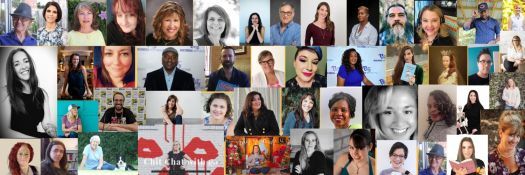 https://theauthorsporch.com/podcast/IV. Promoting Mutual Success
https://theauthorsporch.com/podcast/IV. Promoting Mutual SuccessCollaboration and support can lead to mutual success in many ways. Here are a few examples:
 https://theauthorsporch.com/the-authors-porch-magazine/Cross-promotion: Authors can share their audiences and expand their reach by promoting each other’s books on their social media pages, co-hosting book launch events, or even writing guest blog posts for each other’s websites.
https://theauthorsporch.com/the-authors-porch-magazine/Cross-promotion: Authors can share their audiences and expand their reach by promoting each other’s books on their social media pages, co-hosting book launch events, or even writing guest blog posts for each other’s websites.
 https://theauthorsporch.com/the-authors-porch-magazine/Anthologies or joint publications: Authors can showcase their work alongside other talented authors by contributing to anthologies or joint publications. This can increase exposure and sales for all involved. I have joined anthologies to build my reader base as reader magnets only, and I’ve joined anthologies to sell. We reached #1 across multiple platforms in one anthology, and now I get to tout the title Best Selling Author because of it. Anthologies are great, but jump on with a great organizer. I recommend Ashley Z. You won’t be disappointed. She does both newsletter builders and ones for selling. As for Joint publications, of course, I’m biased here. Submit your articles to The Authors Porch Magazine. We’re always accepting submissions for our quarterly magazine.
https://theauthorsporch.com/the-authors-porch-magazine/Anthologies or joint publications: Authors can showcase their work alongside other talented authors by contributing to anthologies or joint publications. This can increase exposure and sales for all involved. I have joined anthologies to build my reader base as reader magnets only, and I’ve joined anthologies to sell. We reached #1 across multiple platforms in one anthology, and now I get to tout the title Best Selling Author because of it. Anthologies are great, but jump on with a great organizer. I recommend Ashley Z. You won’t be disappointed. She does both newsletter builders and ones for selling. As for Joint publications, of course, I’m biased here. Submit your articles to The Authors Porch Magazine. We’re always accepting submissions for our quarterly magazine.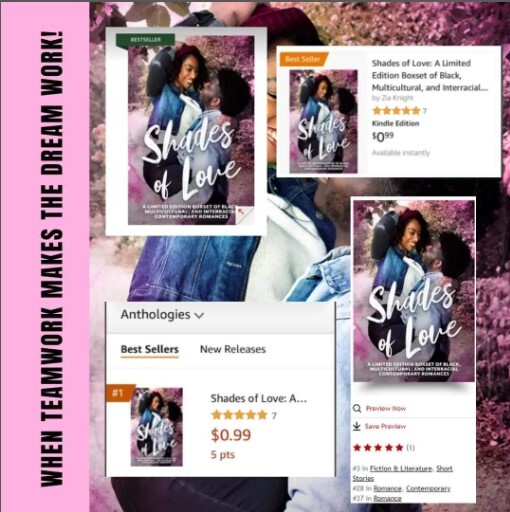 Marketing and book launch collaborations: Authors can collaborate on marketing and book launch activities by co-creating marketing materials, running joint advertising campaigns, or hosting joint book signings. This can reach a wider audience and generate more excitement about their work. I’ve seen Facebook Parties, swaps on newsletters, and sharing launches in each other’s groups. It’s all about sharing is caring for people, and authors are always doing it. You never know if you don’t ask. You can always share in our public group, The Authors Porch Promotions.
Marketing and book launch collaborations: Authors can collaborate on marketing and book launch activities by co-creating marketing materials, running joint advertising campaigns, or hosting joint book signings. This can reach a wider audience and generate more excitement about their work. I’ve seen Facebook Parties, swaps on newsletters, and sharing launches in each other’s groups. It’s all about sharing is caring for people, and authors are always doing it. You never know if you don’t ask. You can always share in our public group, The Authors Porch Promotions.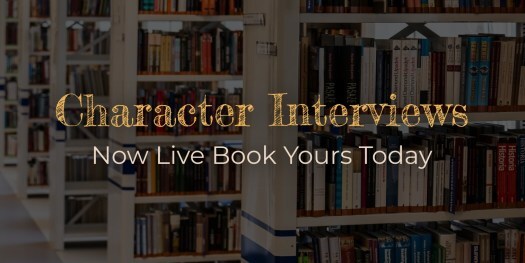 https://theauthorsporch.com/character-interview/Recommending and supporting fellow authors: Authors can recommend and support each other by writing reviews of each other’s books (of course, after they have purchased legally or been given a review copy and never 1 for-1 review swaps), sharing each other’s work on social media or being a sounding board for each other. This helps build a sense of community and camaraderie among authors, which is very helpful in the competitive publishing world.
https://theauthorsporch.com/character-interview/Recommending and supporting fellow authors: Authors can recommend and support each other by writing reviews of each other’s books (of course, after they have purchased legally or been given a review copy and never 1 for-1 review swaps), sharing each other’s work on social media or being a sounding board for each other. This helps build a sense of community and camaraderie among authors, which is very helpful in the competitive publishing world.
 https://bookbrush.com/bookmarcon/
https://bookbrush.com/bookmarcon/
 https://www.thebookfest.com/
https://www.thebookfest.com/By working together, authors can help each other to achieve success.
Building a solid author community is important for many reasons. First, it can provide support and encouragement. When you are part of a community of writers, you have people who understand what you are going through and can offer advice and support. Second, a strong author community can help you to learn and grow as a writer. You can learn from other writers’ experiences and get feedback on your own work. Third, a strong author community can help you to connect with readers and promote your work. When you are part of a community, you have a built-in audience who is interested in what you have to say. There are more than enough readers for every author. No need to try to hoard them all. If you wrote one book a day, you still couldn’t keep up with how many books are needing to be written. So remember, collaboration over competition all day long!
So what are you waiting for? Start building your author community today!
Join us on The Authors On The Porch.

The post Building a Strong Author Community appeared first on .

